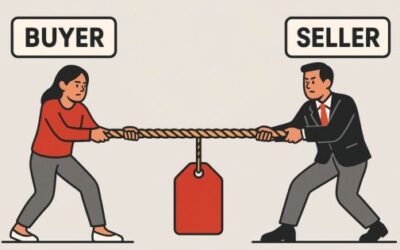Don’t Get Trapped: Solving Business Problem, Not Technical Problems
We’re told to go find our customers problems and solve them. Easy enough, right? Well, not exactly. There are a lot different types of problems and not all problems are equal. And if we target the wrong problem the sales cycle will be long, arduous and susceptible to the competition.
The two most common problems I see sales people get tripped up with are technical problems and business problems. The reason? We treat them the same, but they are not.
Technical Problems Examples
- No redundancy
- Lack of integration
- No Bluetooth connectivity
- Takes too long to load
- Poor user interface
- Can’t send emails via Outlook
- Takes too long to input a new record
- Hard to find old records
- Can’t email patients
- Not green
- Lack of 24/7 support
- No single sign on
- etc.
These are all technical problems. They are issues or problems your customers or prospects suffer from and are looking to directly fix, change, improve, solve for, etc. Technical problems are where features come from. They are feature feeders. They drive feature requests and as much as they improve a product, they also drive product crazy because they never, ever, ever, ever, stop coming. Someone always has a technical problem that your solution doesn’t address.
They are feature feeders. They drive feature requests and as much as they improve a product, they also drive product crazy because they never, ever, ever, ever, stop coming. Someone always has a technical problem that your solution doesn’t address.
Business problems on the other hand are different.
Business problems Examples
- Losing to the competition
- Shrinking profit margins
- Poor ticket sales
- Shrinking ARPU (Average Revenue Per User)
- Declining subscriptions
- Lower sales/revenue
- Increased manufacturing costs
- Low customer service scores
- Low inventory turns
- High employee turnover
- Churn
These are all business problems. These are issues or problems that reflect what it is the organization ultimately wants to get done. Business problems are the real problem an organization struggles with, while technical problems are the symptom or part of the bigger business problem. They are the key elements of the business that truly drive the business, where success or failure are predicated.
Too often we get side tracked by trying to solve the customers technical problems and not their business problem. It’s a trap. Stay away! Don’t get trapped. Customer’s don’t want to email patients, they want better customer service. Customers don’t want a killer interface, they just don’t want to lose to the competition. Customers don’t want to find records faster, they want their employees to be happy and more effective. Prospects don’t want your product to integrate with outlook, they want to increase ticket sales, and here in lies the challenge for most sales people. They sell to the technical problem not the business problem and that’s a problem.
Business problems are addressed successfully or not by addressing technical problems
BUT rarely does a single technical solution solve the business problem. As they say, there is more than one way to skin a cat. It’s this reason that we need to stay away from technical problems and focus on the business problem.
If you can provide reduced customer churn without killer user interface, then you’ll win the deal. If you can slow their rate of employee turnover without single sign on, then your in a good position. When you target the business problems, the technical problems are put in their APPROPRIATE place.
When we try to solve technical problems, we are chasing our tail, as you solve one another arises. Once that one is fixed, yup another and another and another rise up. It’s a never ending pursuit and if you’re in a sales game of who can solve the most technical problems, you are fucked. There is always someone who can solve a problem you can’t. There is always a feature your prospect wants, that you don’t have. Don’t play that game.
Gap Selling Sales Training 101
So, what to do? Focus on the business problems. When a prospect says, “it must integrate with Outlook,” find out why? How does the lack of integration affect the business? Find out what they are looking to accomplish with the entire solution before you begin resolving technical issues and problems. Find out what the critical business drivers are. Why do they need a new solution? What is going on that has them investing in something new? The key to the sale is in the answer to that question.
accomplish with the entire solution before you begin resolving technical issues and problems. Find out what the critical business drivers are. Why do they need a new solution? What is going on that has them investing in something new? The key to the sale is in the answer to that question.
I can promise you NO COMPANY ever passes on a new solution just because it doesn’t integrate into outlook. It’s what happens to or in their environment when things aren’t integrated that is driving the investment and you had better know what it is.
Not all problems are created equal. Don’t get caught in the technical problem race. It’s like an arm race you will never win over time. Figure out what the critical business problems your prospect or customer is facing and solve those. It’s where the win is.



0 Comments